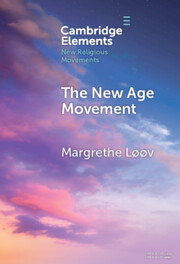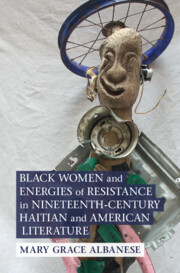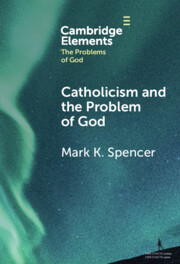249 results
7 - The Post-war Golden Generation, 1945–1965
- from Part II - Networks
-
-
- Book:
- The Cambridge Companion to Australian Poetry
- Print publication:
- 13 June 2024, pp 119-133
-
- Chapter
- Export citation
Chapter 5 - American Spirituality
-
-
- Book:
- The Cambridge Companion to American Utopian Literature and Culture since 1945
- Published online:
- 09 May 2024
- Print publication:
- 16 May 2024, pp 100-114
-
- Chapter
- Export citation
7 - Quantum Mechanics and Our View of Reality
- from Part I - A Nonmathematical Exposition of Quantum Mechanics and Quantum Field Theory
-
- Book:
- Interpreting Quantum Mechanics
- Published online:
- 09 May 2024
- Print publication:
- 16 May 2024, pp 93-110
-
- Chapter
- Export citation
Chapter 1 - Solitude Is Not Just for Hermits, Poets, and Billionaires
-
- Book:
- Solitude
- Published online:
- 24 March 2024
- Print publication:
- 18 April 2024, pp 11-33
-
- Chapter
-
- You have access
- HTML
- Export citation
Do spirituality and emotional intelligence improve the perception of the ability to provide care at the end of life? The role of knowledge and self-efficacy
-
- Journal:
- Palliative & Supportive Care , First View
- Published online by Cambridge University Press:
- 29 February 2024, pp. 1-9
-
- Article
- Export citation

The New Age Movement
-
- Published online:
- 14 February 2024
- Print publication:
- 30 June 2024
-
- Element
- Export citation
Religious Dissociation and Liberal Separation: Inside a Christian Brotherhood and a Masonic Lodge
-
- Journal:
- European Journal of Sociology / Archives Européennes de Sociologie , First View
- Published online by Cambridge University Press:
- 29 January 2024, pp. 1-32
-
- Article
-
- You have access
- Open access
- HTML
- Export citation
Essays on Partial Derangement of the Mind in Supposed Connexion with Religion by John Cheyne
-
- Journal:
- BJPsych Advances , FirstView
- Published online by Cambridge University Press:
- 25 January 2024, pp. 1-3
-
- Article
- Export citation
Spirituality moderates the relationship between cancer caregiver burden and depression
-
- Journal:
- Palliative & Supportive Care / Volume 22 / Issue 3 / June 2024
- Published online by Cambridge University Press:
- 22 December 2023, pp. 470-481
-
- Article
- Export citation
7 - The sacred
-
- Book:
- Re-imagining Social Work
- Published online:
- 07 December 2023
- Print publication:
- 21 December 2023, pp 123-138
-
- Chapter
- Export citation
Impact of spirituality on elderly people's quality of life and life satisfaction after acute myocardial infarction: Iranian hospital-based study
-
- Journal:
- BJPsych Open / Volume 10 / Issue 1 / January 2024
- Published online by Cambridge University Press:
- 07 December 2023, e4
-
- Article
-
- You have access
- Open access
- HTML
- Export citation
Introduction
-
- Book:
- Black Women and Energies of Resistance in Nineteenth-Century Haitian and American Literature
- Published online:
- 09 November 2023
- Print publication:
- 23 November 2023, pp 1-15
-
- Chapter
- Export citation
Chapter 5 - Mesmeric Revolution
-
- Book:
- Black Women and Energies of Resistance in Nineteenth-Century Haitian and American Literature
- Published online:
- 09 November 2023
- Print publication:
- 23 November 2023, pp 134-155
-
- Chapter
- Export citation

Black Women and Energies of Resistance in Nineteenth-Century Haitian and American Literature
-
- Published online:
- 09 November 2023
- Print publication:
- 23 November 2023
6 - Religion and Spirituality in Romantic Relationships
-
-
- Book:
- The Sociocultural Context of Romantic Relationships
- Published online:
- 19 October 2023
- Print publication:
- 02 November 2023, pp 90-114
-
- Chapter
- Export citation

Catholicism and the Problem of God
-
- Published online:
- 27 October 2023
- Print publication:
- 23 November 2023
-
- Element
- Export citation
5 - Religion and Spirituality
-
- Book:
- Resilience
- Published online:
- 01 August 2023
- Print publication:
- 07 September 2023, pp 87-104
-
- Chapter
- Export citation
Chapter 3 - Black Same-Gender-Loving Male Couples’ Health within an Afrocentric Psychological Paradigm: The Influences of Spirituality and Religion
- from Part I - Race, Racism, and Identity
-
-
- Book:
- Black Couples Therapy
- Published online:
- 27 July 2023
- Print publication:
- 10 August 2023, pp 58-82
-
- Chapter
-
- You have access
- HTML
- Export citation
The association between posttraumatic stress symptoms and suicidal ideations among Palestinians: The mediating role of spirituality, social support and mindfulness
-
- Journal:
- Cambridge Prisms: Global Mental Health / Volume 10 / 2023
- Published online by Cambridge University Press:
- 07 August 2023, e48
-
- Article
-
- You have access
- Open access
- HTML
- Export citation
6 - Gregory of Nyssa – Naming and Following God From Mystic Vision to Ethics
-
- Book:
- Naming God
- Published online:
- 30 June 2023
- Print publication:
- 20 July 2023, pp 113-137
-
- Chapter
- Export citation



